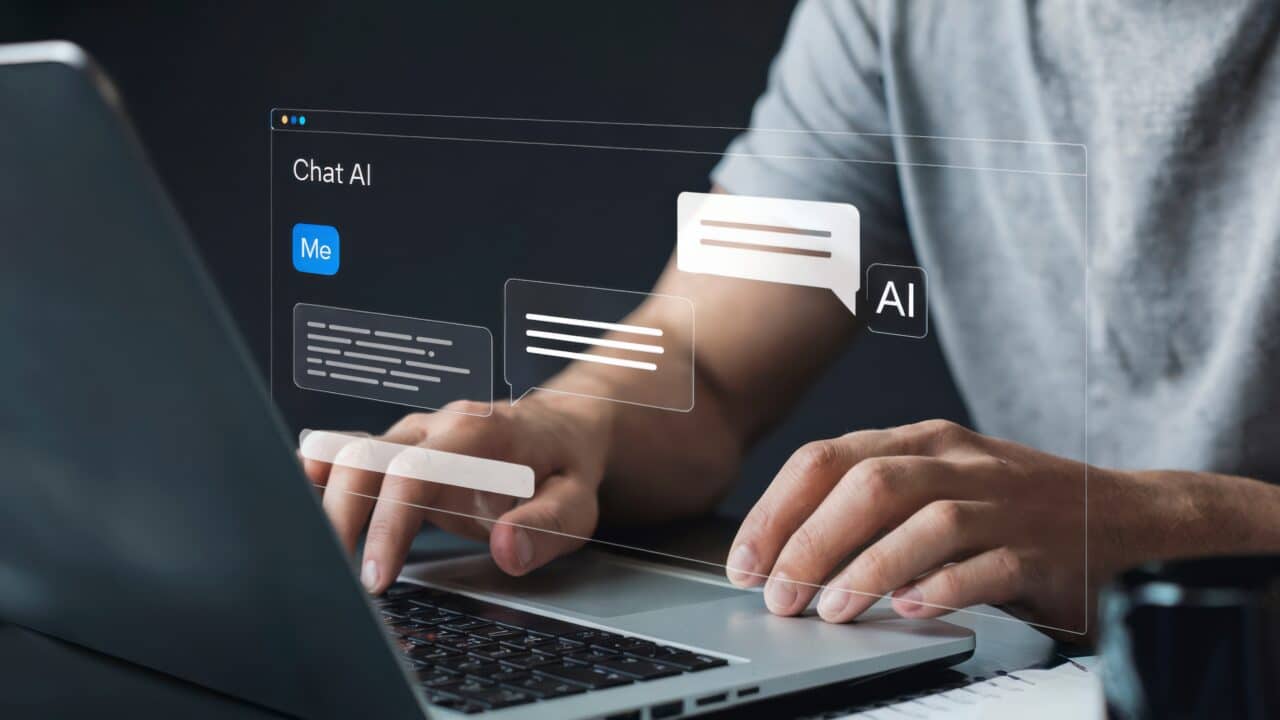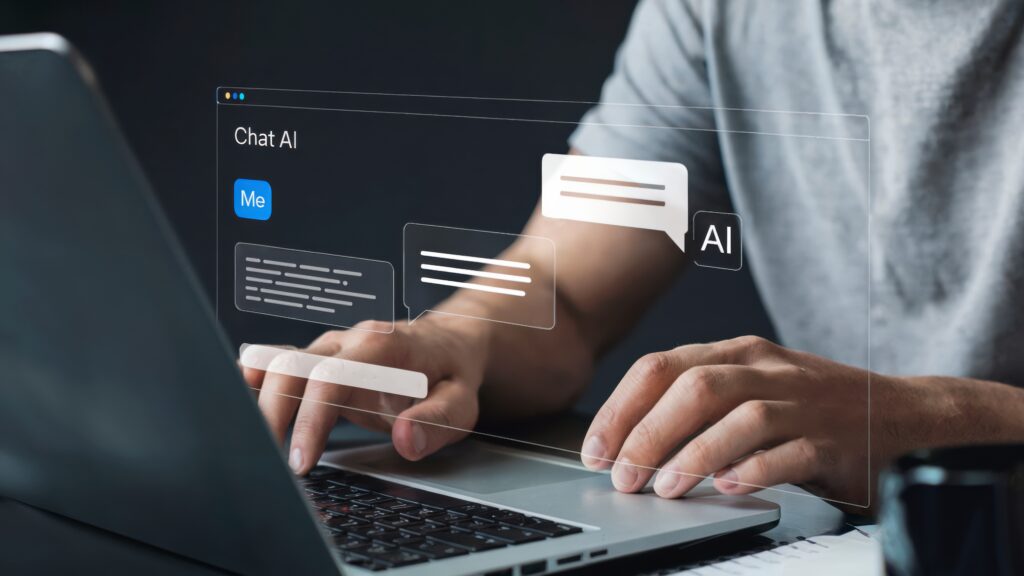
Most IT operations haven’t really been “operating.” For decades, we’ve built workflows that respond after something breaks. Rule-based automation helped, but only in narrow, pre-defined scenarios. It was better than nothing—but not by much. Enter GenAI in IT operations.
Generative AI is not just the next step in automation. It’s a leap. Where traditional AIOps was reactive and rigid, GenAI brings adaptability, reasoning, and scale. It’s doing for IT operations what electricity once did for manufacturing, redefining what’s possible, not just accelerating what’s already there.
When integrated into mature operations, it amplifies all three S’s: Speed, Scale, and Satisfaction.
From Rules to Reasoning

Traditional AIOps was built on logic trees: if service is down, then restart it. That worked until it didn’t. As soon as the environment changed or an unexpected condition occurred, everything ground to a halt.
GenAI breaks through those walls. It does more than follow rules; it interprets them, adapts to new data, and reasons through scenarios with human-like flexibility. I saw it firsthand.
A Fortune 200 American insurance and finance company was facing a major customer service breakdown. On paper, they’d done everything right: they launched an in-house, rule-based chatbot to help users find answers through self-service guides.
And at first? It worked. Adoption was strong. Users resolved common issues without needing to call.
But that success didn’t last.
Within a year, service desk calls started flooding in, far more than before.
So what went wrong?
The chatbot could only handle “known” issues, the things it had been explicitly programmed for. But the business was changing fast. New tools. New systems. Constant updates. And with that came a flood of unfamiliar questions, the kind that didn’t have a rule or a pre-written article.
Here’s what happened:
Users tried the bot, got stuck, and grew frustrated. They’d still end up calling support, only now, after wasting time. This led to massive backlogs, slower resolution times, and increasingly unhappy customers.
To make matters worse, the service desk team had been reduced based on an assumption that the bot would deflect 40% of incoming volume. Instead, it created a bottleneck.
That’s when we stepped in.
We implemented a Gen AI-powered solution advisor—something far more adaptive than the rule-based system. This wasn’t about replacing humans. It was about augmenting them and making self-service smarter.
The Gen AI system could learn from historical data, interpret user context, and recommend (or even execute) the next best action. Crucially, it could also handle “unknowns”—those edge cases the old chatbot simply couldn’t process.
The impact?
- A 50% improvement in first-call resolution through the bot
- A 35% drop in Mean Time to Resolution (MTTR) for all tickets
Self-service finally lived up to its promise, and users stuck with it because it actually worked.
Not to mention the time and cost savings. But the real win was restoring confidence. Users felt seen again, not stuck in a loop or shouting into the void. They reached out, and they got the help they actually needed.
This example marks a turning point.
It shows how our customers move past rigid systems and replace them with ones that flex, learn, and respond in real time like the teams behind them.
Interpretable AI: The Missing Link in Trust

AI that can’t be understood can’t be trusted. And trust is non-negotiable in operations.
For years, we’ve had models that could surface anomalies or point to a pattern but required human engineers to decode the findings before any action was taken.
GenAI changes that. It can now generate explanations in plain language, offer clear justification, and adapt to users’ needs.
Back in 2019, at a large American multinational consumer goods company, we rolled out an AI-powered guided resolution system. It used smart classification models and made an immediate impact, shifting 15% of L2 support tasks to L1 within ten months.
But by the second year, progress stalled.
The “shift left” momentum had flatlined. And despite having guided resolutions and one-click automation in place, we couldn’t figure out why.
So, we sat down with the operations team to dig deeper. The answer came down to one word: trust.
Even though the system was identifying root causes, our expert engineers weren’t fully on board. They continued to manually reanalyze and validate every recommendation before allowing automation to run.
As a result, they remained tied to the same work, and the efficiency gains never reached their full potential.
That’s when we introduced a GenAI-powered Root Cause Analysis (RCA) solution, which not only identified the problem but also explained it clearly.
Our RCA solution explained:
- What the issue was
- What the root cause was
- Why it pointed to that root cause
- And the knowledge base articles it used to get there
For the first few months, our subject matter experts (SMEs) reviewed every explanation.
However, once accuracy consistently exceeded 90%, trust began to build.
They began allowing GenAI to trigger automation for routine issues directly. For more complex ones, they moved to one-click approvals, no more rechecking everything line by line.
Humans weren’t removed from the process (nor should they be).
The shift meant SMEs only needed about 20% of their previous validation bandwidth. That freed them up to focus on high-touch, nuanced challenges that truly required human expertise.
The impact?
A 30% improvement in ticket resolution time—and more time to drive innovation.
How GenAI Is Solving the Knowledge Black Hole in IT Support

Here’s an all-too-common scenario:
You walk into the office, and someone breaks the news:
“Sarah’s out on unplanned leave.”
Or worse:
“Max just gave his two weeks.”
And suddenly, a critical piece of your IT Ops puzzle is gone.
That immediate, collective groan? It’s not just about being short-staffed. It’s about what’s leaving with them: the deep, hard-earned knowledge that only they had. The fix they never wrote down. The shortcut they discovered last year. The way they just knew what to ask or look for.
Most of us have seen it: training that doesn’t stick, documentation that’s outdated almost as soon as it’s written, and tribal knowledge buried in Slack threads or hallway chats. Even when things are written down, they get lost in message piles, overwritten by new processes, or forgotten once the person who knew it best moves on.
That’s the real pain—what many of us call the “knowledge black hole.”
The good news? That’s starting to change.
GenAI is not just a task-doer or content generator. It’s a pattern-watcher and learner. It can now observe how experienced engineers diagnose problems, capture the exact sequence of steps they follow, the probing questions they ask, and the logic behind their decisions.
And that learning doesn’t sit idle. It is embedded directly into your support systems, updating knowledge bases, enhancing step-by-step guidance, and adapting in real-time as new challenges emerge.
So when the next new hire joins—or when someone suddenly exits—knowledge doesn’t go missing. It’s right there. Embedded in your workflows. Accessible through a simple question in natural language.
No more waiting days for a senior engineer to respond. No more guessing games. Just real-time, guided answers backed by the same logic your best team members used.
This isn’t about replacing people. It’s about preserving what they know, extending that expertise across the team, and making it easier for everyone to do their best work.
The result? A team that learns faster works smarter and doesn’t fall apart when life happens.
The Future of Automation: Why Humans Still Matter
GenAI is making orchestration and predictive remediation a reality—capabilities we once only imagined.
AI agents can now detect issues, make decisions, and take action. But they’re not in the captain’s seat. They’re copilots supporting the people who are still essential for nuance, oversight, and strategic direction.
At Astreya, we’ve invested in Centers of Excellence, human-in-the-loop frameworks, and talent development to make sure automation is paired with judgment. Because autonomy without accountability isn’t progress—it’s risk.
Our SMEs ensure the right principles are applied while developing AI agents. Not only that, we’ve defined AI-specific KPIs to monitor performance and enabled audits to regulate the automated process.
While the buzz around autonomous agents is exciting, my real-world experience has made me a strong advocate for Human-Driven AI Agents—even in scenarios that sound fully autonomous on the surface. It’s not a question of if AI and humans work together, but how.
Imagine this: your bank uses a smart system to catch fraud. Every time you swipe your card, transfer money, or make a payment, it’s watching behind the scenes—combing through billions of data points to catch anything that seems off.
If something feels suspicious, it might flag it. Sometimes it even freezes your account.
But let’s pause.
- What if that same system is more likely to flag payments from certain neighborhoods or zip codes?
- What if it’s blocking a parent trying to send their kid lunch money—or flagging a small business owner making a regular supplier payment?
- And what if, while it’s busy catching the “wrong” things, it’s missing the real threats?
We often talk about how smart these tools are. But the real question is: smart for whom?
And at what cost?
These are the questions we must ask—not just to improve performance but to ensure fairness, accountability, and reliability.
The Right Thing to Do: Human Judgment as the North Star

With all the advancements in AI, the question isn’t just “What can it do?” but “What should it do?”
That’s why human fraud analysts remain essential.
They investigate the gray areas.
When an AI flags a transaction, it doesn’t know if that last-minute plane ticket was for a family emergency or something more suspicious. Humans do. They bring the context, empathy, and reasoning that machines still lack.
They make the final call.
Humans weigh the risk of acting or not acting. They assess intent, review customer history, and consider the real-world impact of freezing an account or flagging a transaction. An algorithm might detect an anomaly, but it can’t understand context, emotion, or urgency. That’s why the final decision—whether to intervene at all—still belongs to people.
They keep the system learning.
By reviewing edge cases and spotting new fraud tactics, analysts help retrain the AI and refine its logic. That ongoing feedback loop is what prevents models from drifting or becoming blind to subtle shifts.
The future isn’t about removing humans from the equation. It’s about putting them in the right seat.
I call it Human-Driven AI—where people guide, audit, and evolve intelligent systems.
Engineers aren’t being replaced. Instead, they’re stepping into new roles—as architects, trainers, and stewards of how AI shows up in the real world.
AIOps, Rewritten
At Astreya, we see GenAI as a transformation agent that can help teams spend less time reacting and more time creating value.
For years in infrastructure operations, we’ve known that roughly 80% of tasks are theoretically automatable.
Yet the frustrating reality was that traditional tech limitations kept us stuck, automating only 30–40% of that potential. It was like having a super-fast car but being stuck in first gear.
Then came GenAI—and suddenly, what used to hold us back isn’t holding us anymore.
We’re now automating over 60% of tasks, and not just the easy ones.
We’re going after the tough stuff—the kind of work that used to take hours of human effort or painfully fragile scripts just to get right.
This movement is about giving teams time back, so they’re not buried in the same repetitive issues week after week. It’s smarter, faster problem-solving without all the technical debt.
I still remember how brutal those early assessments were.
Just one enterprise automation review could take us five full days—sometimes more.
We’d spend hours buried in spreadsheets, connecting dots by hand, trying to make sense of scattered data across systems. Writing the final report felt like running a marathon with bricks in our pockets.
Now? What used to take a week, we knock out in half a day.
GenAI handles the grunt work—sifting through the noise, spotting patterns, even pulling together a first draft of the report. It’s like having a team of lightning-fast, detail-obsessed interns on your side. Vital support when budgets are tight.
And what’s even better?
That speed hasn’t just saved time—it’s unlocked momentum. We can now go deeper, faster, and take on more without burning out.
Building a new micro-app for our internal analysis or to automate a specific AIOps process used to mean weeks of focused coding, debugging, and testing.
Now? It’s just a few days’ work.
GenAI has become our invaluable co-pilot that does more than generate code. It suggests elegant architectures and pinpoints errors with astonishing speed.
And yes, joy is possible in IT operations. When systems run smoothly, engineers can finally focus on the creative, strategic work they signed up for.
So, let’s stop asking whether GenAI is “ready”—and start building the systems that are ready for it.
Get Started with GenAI in IT Operations
Don’t just talk about AI—start seeing real results. We’ll help you assess your systems, upskill your teams, and align your strategy so everything’s ready for what’s next.
👉 Get in touch to kick off your AI transformation.

Debashree Chatterjee
Helps organizations build and scale world-class AI, automation, and data engineering practices. With 22 years of global leadership, Debashree has launched high-impact go-to-market strategies for enterprise AI across Gen AI, RPA, and AIOps platforms. She has extensive experience in market leading platforms, such as ServiceNow, UiPath, and Automation Anywhere. Debashree is also the creator of AUTOGRIT™, the industry’s first trademarked IT Automation framework (US, UK, India), designed to turn automation strategy into tangible business results.